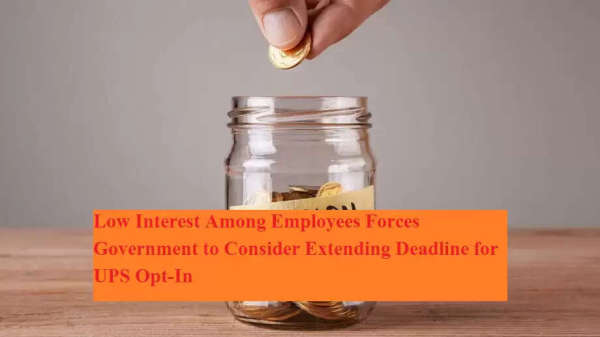
As the June 30 deadline approaches for government employees to opt out of the National Pension System (NPS) and switch to the Unified Pension Scheme (UPS), the central government is beginning to face unexpected resistance. Despite the enhanced social security benefits promised under the new pension scheme, most employees seem hesitant to make the shift.
According to the latest data, only around 50,000 central government employees have opted for UPS so far. This is a small fraction of the estimated 27 to 30 lakh employees currently enrolled under the NPS. The lukewarm response is causing concern within government circles, as the rollout of UPS was intended to provide stronger retirement benefits and social protection for the workforce.
While the UPS scheme offers better retirement and death gratuity benefits—similar to the Old Pension Scheme (OPS)—many employees are still unsure about making the transition. The reasons behind this hesitation include:
Lack of clarity around the long-term stability and structure of UPS
Uncertainty regarding how the new scheme will be managed and funded
Concerns about policy continuity with changing governments
Limited awareness campaigns or guidance from departments
For many, the NPS—despite offering less comprehensive benefits—is a known system they’ve adapted to over time. UPS, on the other hand, remains unfamiliar and is perceived as a work-in-progress.
The relatively low adoption of UPS is not aligning with government projections. Initially, officials had expected a large chunk of NPS subscribers to switch to UPS, especially considering its added gratuity benefits and OPS-like structure.
However, the employee response so far indicates either a lack of trust in the new system or insufficient information reaching the ground level. Without major awareness efforts, the goal of a smooth transition to UPS may not materialize.
With growing concerns over the slow response, there is now speculation that the government may extend the June 30 deadline to allow more employees time to evaluate their options. Officials are reportedly considering a grace period, during which departments can conduct more extensive outreach and clarification drives to resolve employee doubts.
An extension could offer employees the opportunity to:
Understand UPS benefits in depth
Analyze how it compares to NPS in the long term
Consult with financial advisors or department heads
Make a well-informed and confident decision
Several employee unions have voiced the need for more transparency and communication regarding the new pension system. Some employees are advocating for side-by-side presentations of UPS vs NPS benefits, to help them make better choices.
Additionally, employees in rural or semi-urban areas reportedly have even less access to official communications, which is also contributing to the reluctance.
The Unified Pension Scheme was introduced as an alternative to NPS, offering enhanced retirement benefits, especially retirement gratuity and death gratuity—features not available under NPS. UPS is structured to bridge the gap between the modern contributory pension framework and the security of the old defined-benefit model.
In a January 24 notification, the Finance Ministry announced that from April 1, 2025, new civil service recruits would be able to choose between NPS and UPS.
The government’s vision to bring social security parity through UPS is facing an unexpected roadblock in the form of employee hesitation. Without better communication and more time for deliberation, this vision may not translate into reality.
Extending the opt-in deadline appears to be a logical next step—and perhaps a necessary one—to ensure that government employees can make informed decisions about their financial future.